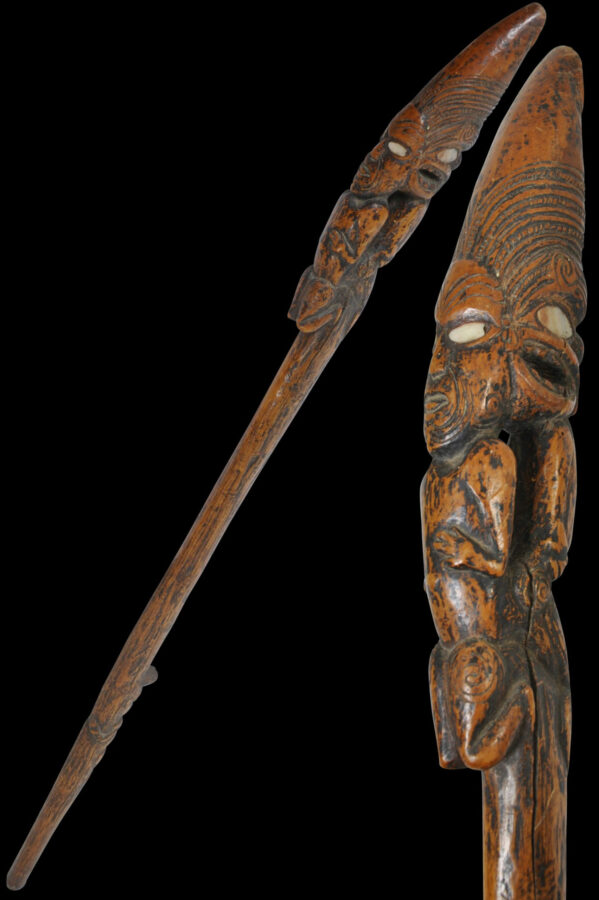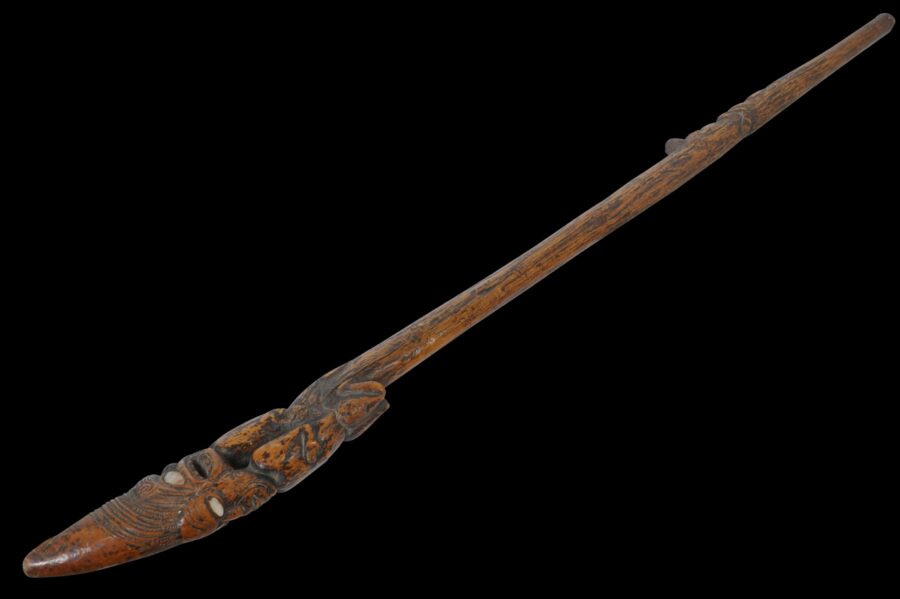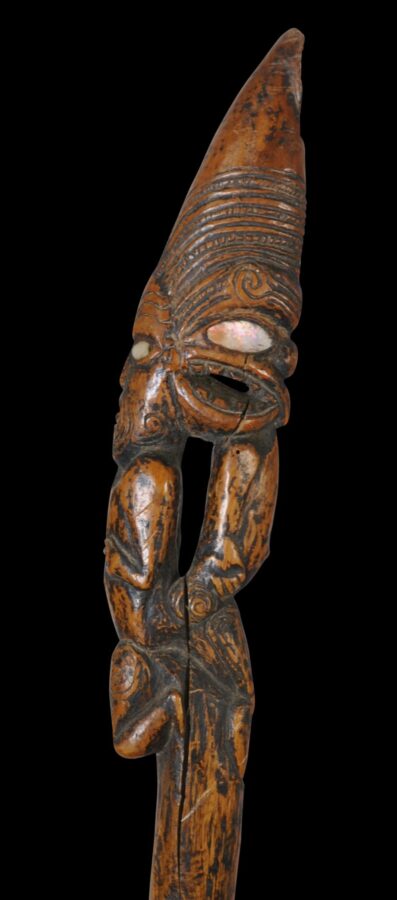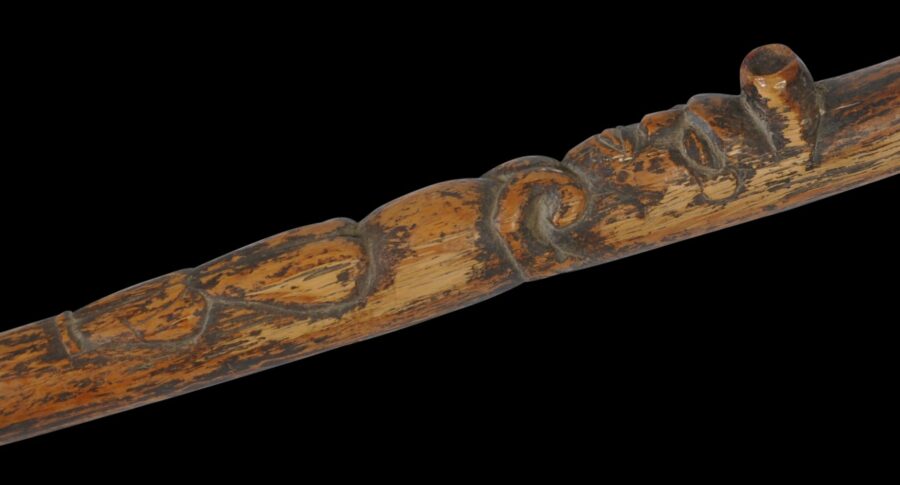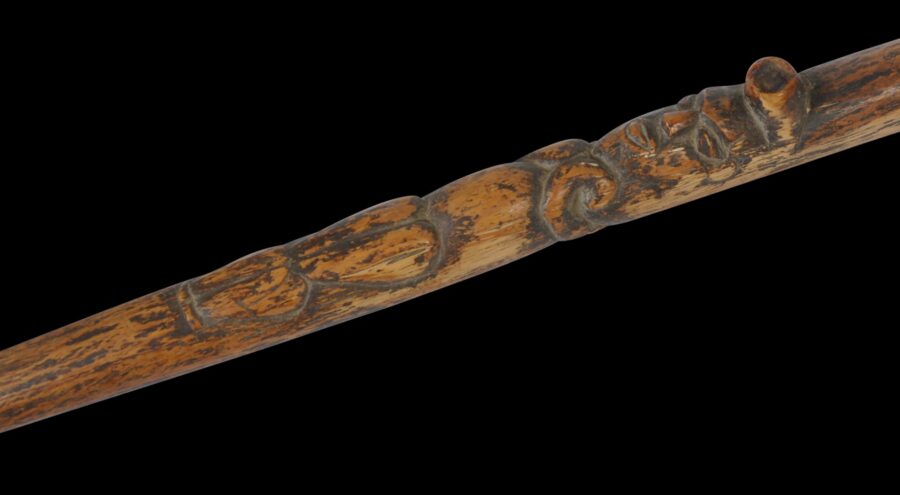Wooden staffs were used by Maori chiefs and other notables as a physical sign of their status. They were held by chiefs whilst addressing important meetings.
The contours of this carved, light brown wooden staff or walking stick have been worn smooth from years of handling. The substantial wear and incontrovertible patina suggest it has significant age and most probably dates at least to the 18th century.
It is carved at the top with an ancestor figure on one side, and a hei-tiki type figure on the other.
The heads of the figures merge into one whole which is carved with bands of rauponga.
Both figures have extensive facial and body tattooing. The eyes of both are inset with haliotis shell.
The right arm rests at the ancestor figure’s side. The left is held towards the breast. The figure kneels and the upper thighs are incised with spiral motifs.
The hei-tiki style figure has been carved with a gaping, pierced mouth, a snub nose, and with arms by the side.
A further figure is carved into the staff two thirds of the way down. This figure is another human figure, shown standing and with arms curled up towards the face.
This example was acquired in England and most probably has been in the UK since colonial times. It has old, age-related cracking (all stable) and the very top of the staff evidences some loss, though the loss itself has much age and patina.
References
Kaeppler, A. L., Polynesia: The Mark and Carolyn Blackburn Collection of Polynesian Art, University of Hawaii Press, 2010.
Starzecka, D. C., R. Neich & M. Pendergrast, The Maori Collections of the British Museum, British Museum Press, 2010.


